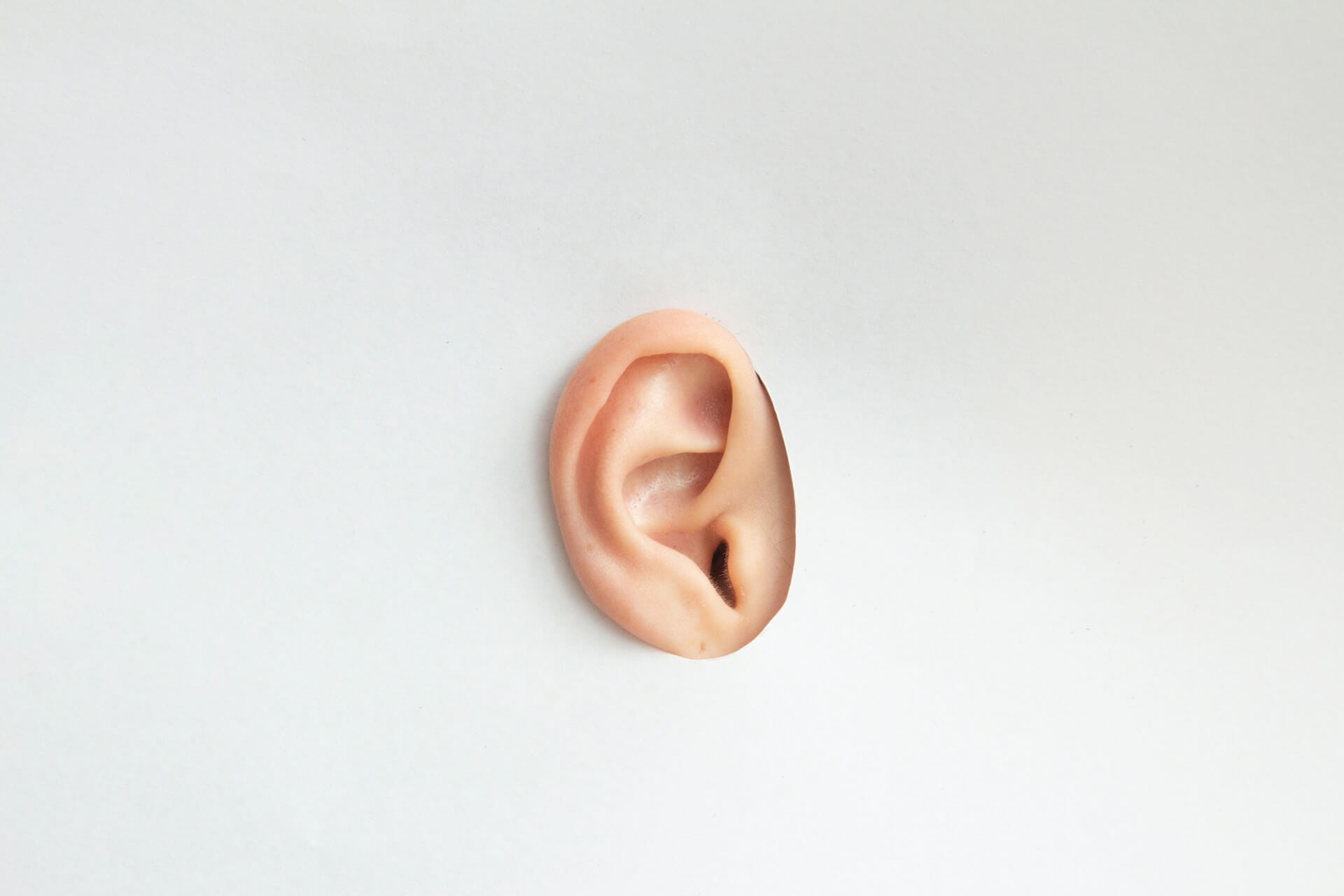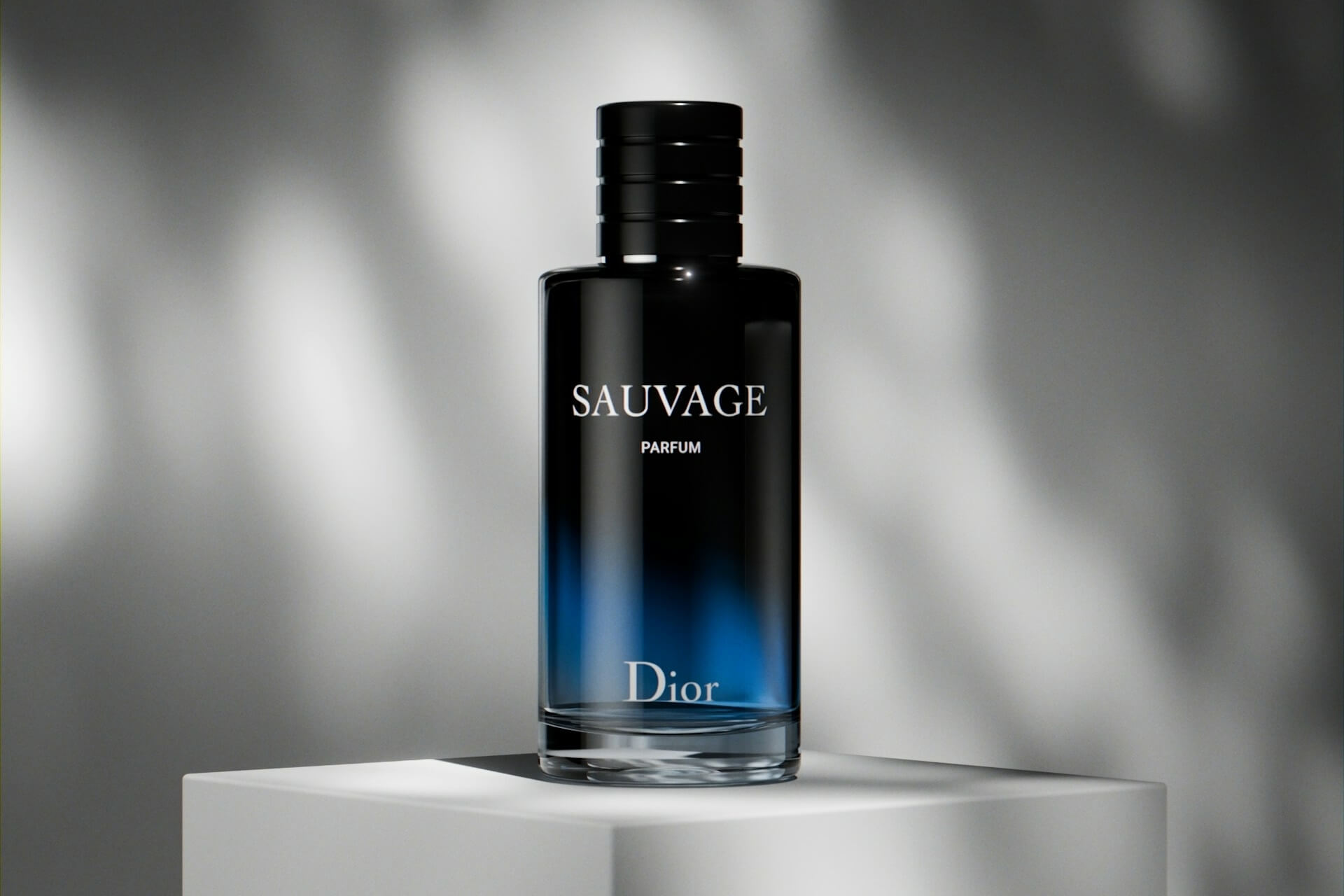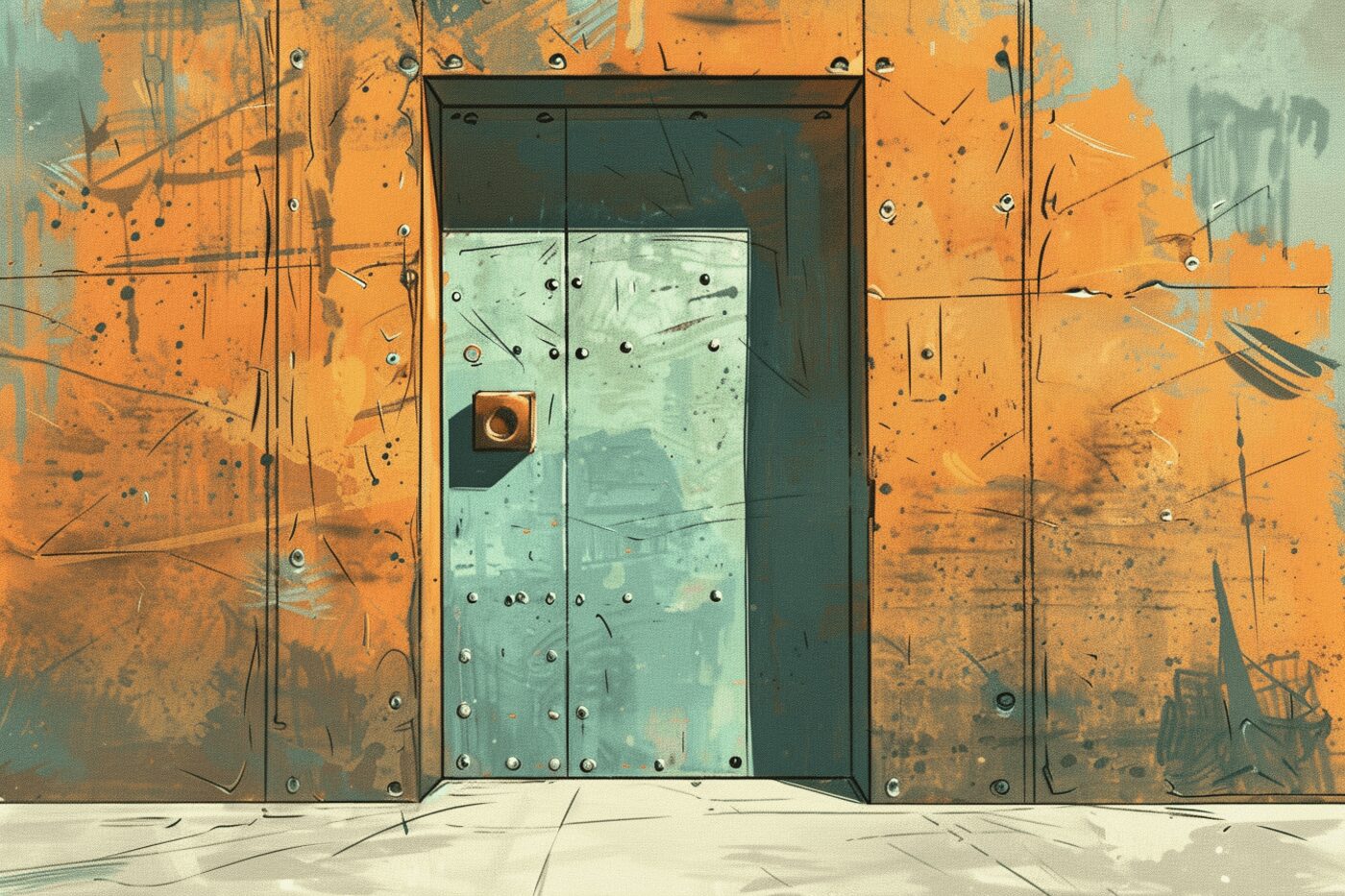Fencing Sword Types: All You Need to Know
Oct 20, 2023
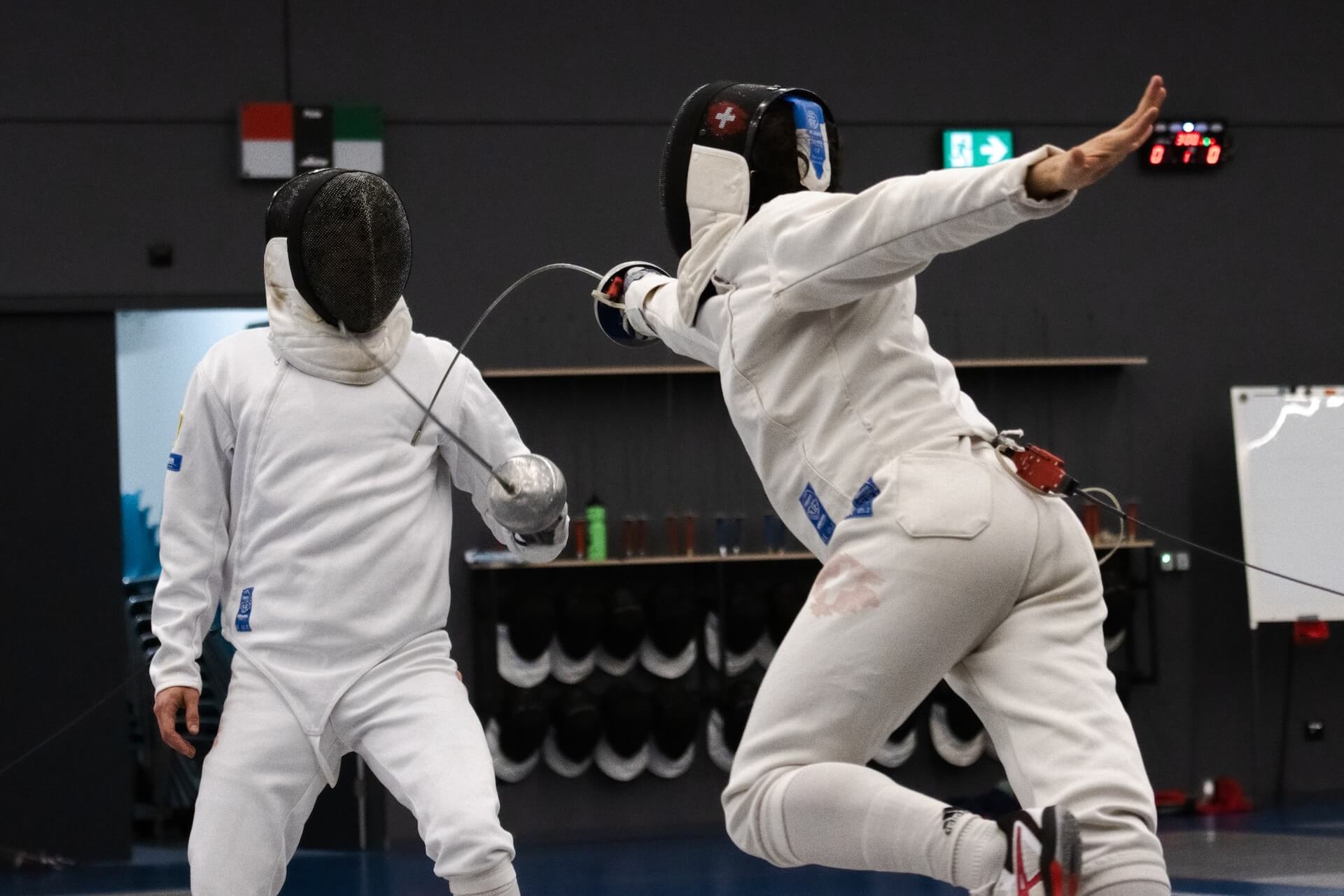
As an Amazon Associate, Modded gets commissions for purchases made through links in this post.
Fencing has evolved a lot over the years — particularly with the clothing and equipment used. Modern fencing, for example, is a lot faster than it was in the past. This is mainly due to the technology implemented into fencing.
While the sword used in fencing have seen some changes, they remain mostly the same. There are three main types of fencing weapons — the Epee, Foil and Sabre. Whether you are a regular fencer or completely new, here is everything you need to know about the different fencing sword types.
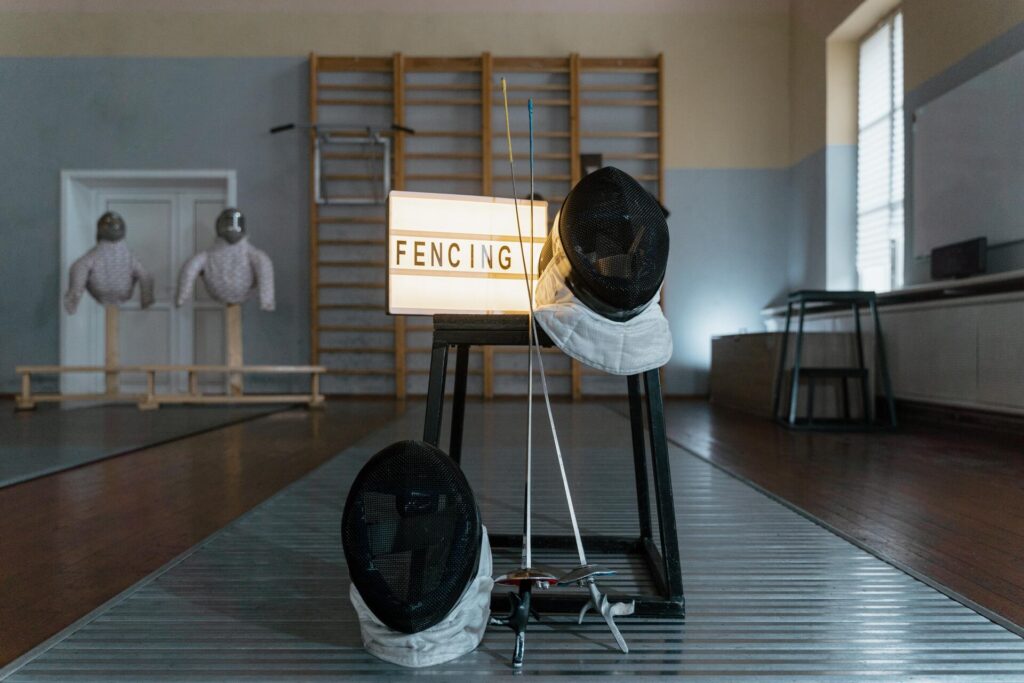
The Three Types of Fencing Swords
While there are only three types of fencing swords, they all come in two versions — electric and non-electric. With the addition of technology in fencing, electrical variants are used. These variants are used in competitions in order to indicate when a touch occurs — these electric swords are connected to scoring equipment.
Electrical fencing weapons and video replays have made the sport faster. Here are the three sword types.
1. Epee
The epee is the largest and heaviest of the three sword types. They were developed in the 19th century for fencing practice and are based on the rapier. In modern fencing, they are blunted and can have a maximum weight of 770 grams.
The overall length of the weapon is 43.30 inches and the blade is 35.43 inches. The epee is a thrusting weapon and the right of way rules do not apply to it. This means any hit that lands on the opponent is counted — which is not the case with the other two weapon types.
With the epee, the wielder can only attack with the point of the blade and not the edge. They are also allowed to attack any body part and clothing or equipment which counts as a hit.
2. Foil
The foil was invented in France — in the 18 century — and used as a practice weapon. This weapon shares some similarities with the epee, such as the overall length and the length of the blade being the same. The maximum weight of the foil is not allowed to be more than 500 grams.
The foil is also used as a thrusting weapon which means the wielder attacks only with the point of the blade. Unlike the epee, the foil can only be used to attack the torso part of the opponent — no other hits will be counted.
If an invalid hit takes place, the bout is stopped and no points are added. The foil also follows the right-of-way rule.
3. Sabre
The sabre separates itself completely from the other two weapon types by being a thrusting and slashing weapon. This means the wielder could use the point of the blade or the cutting edge to score points.
The target area of the sabre is everything from the waist up — unlike the previous weapon type where only the torso is allowed. The sabre is also bound by the right-of-way rule same as the foil and the overall length is 41.34 inches with the blade being 34.65 inches.
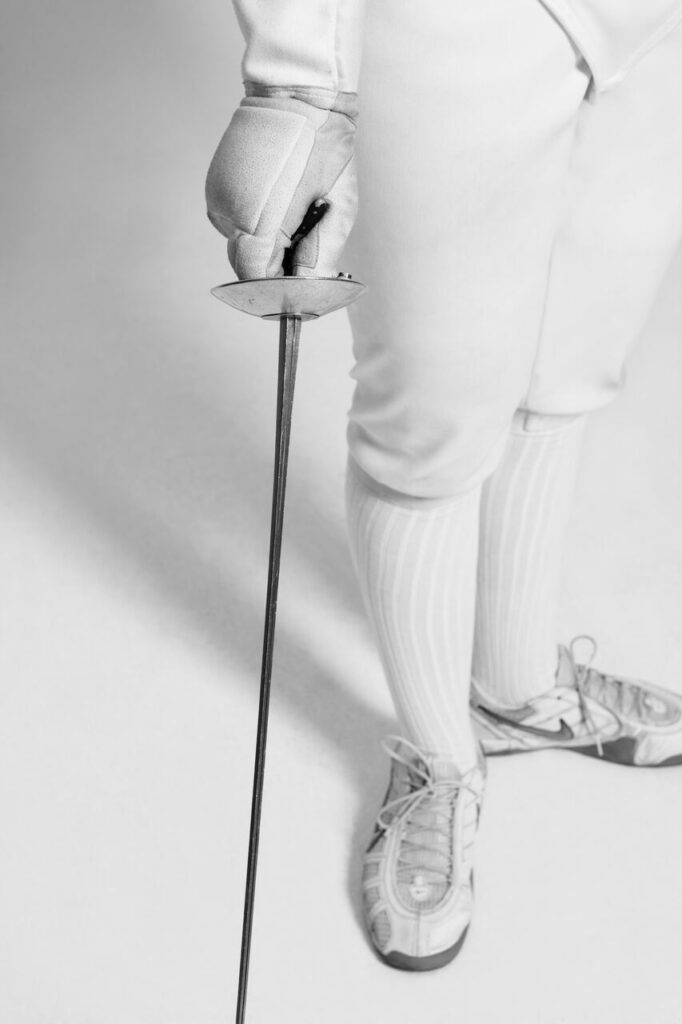
All the Parts of a Fencing Sword
Even though there are three types of fencing swords, they all follow the same structure. Here is the anatomy that makes up a fencing weapon:
Pommel
The pommel is on the bottom of the handle — when utilizing a French grip. While the pommel might not sound like it plays a big role, it is an important part of the fencing weapon, especially with the Epee fencing sword.
The pommel is usually designed to match the handle and also helps the sword to be perfectly balanced. A pommel can vary — materials, size and weight — but they are typically made from metal and their purpose is to hold the entire weapon together.
Handle
The handle — more commonly called a grip in fencing — is where the user holds the weapon. They can be made from different materials but are usually made from exotic hardwood. These exotic hardwood grips allow for limited vibration in the hand when the sword is used.
There are many grips a fencing blade can have but the two main ones are the French grip and the Pistol grip. These two are completely different from one another and come down to personal taste which one the fencer prefers.
Pad
The pad is a protective layer that protects the wielder’s hand from the guard — the pad is located between the grip and the guard. The pad allows the wielder’s hand to be comfortable and stops the guard from chafing on the fingers or knuckles. They are usually constructed from cloth, plastic or leather.
Socket
The socket is only used in the electrical variants of fencing swords. The socket is placed within the guard and is how scoring equipment is connected. The body cord is plugged into the socket and connects with a mechanism that runs through the blade and sits on the point of the blade.
Guard
Guards can differ and also depend on the type of fencing sword used. The main purpose of the guard is to protect the fencer’s hand from any opposing blows. In sabre fencing, the guard not only protects the hand but also has a piece of metal that wraps around the fingers.
Blade
The fencing blade is made from low carbon steel or maraging steel. Maraging steel is used in competitions and allows for more flexibility. The flexibility of the blade also allows for utilizing the ‘flick’ technique — which is commonly relied on in modern fencing.
Point
In the past, when these weapons were used for combat, they were constantly sharpened to have maximum effect. In modern fencing, the point of the blade is not sharp — in order to reduce the chance of an injury occurring — but rather flattened to ensure the safety of both parties involved.
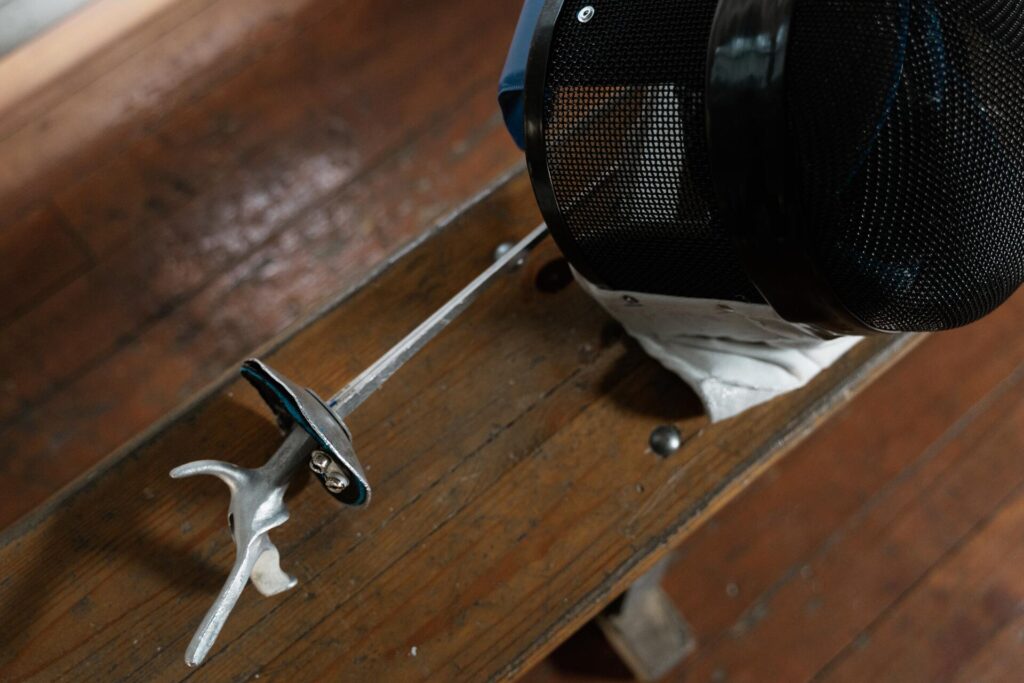
The Different Fencing Sword Grips
Both grips provide their own set of benefits and depend completely on personal preference which one a wielder uses. Here are the two different grips allowed in competitions.
1. The French Grip
The French grip is usually more suitable for beginner fencers than the Pistol grip. With the Frence grip the handle is either straight or has a slight curve in it.
This grip can give the wielder a slight reach advantage — due to being able to hold the handle further down. While the slight reach advantage is a good thing, it does mean the wielder will not be able to parry with the same strength.
2. The Pistol Grip
The Pistol grip differs from the traditional French grip and many elite fencers use it. It is essentially a handle within a handle, meaning the grip is not straight and is made in a more curved shape. Foil fencers usually prefer a Pistol grip and with the epee, it is a combination of the two.
Starting Your Fencing Journey
Learning a new sport is exciting and adrenaline-inducing, but before diving point first into fencing training ensure you know the basics. Which sword you choose is completely up to personal preference. It is recommended you try all three weapon types with different grips to determine which suits you best.
